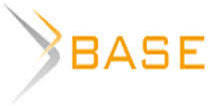ANALYSIS OF CATEGORIES OF IDENTITY IN THE LATE 20th - EARLY 21st CENTURIES ON THE TERRITORY OF MODERN UZBEKISTAN (BASED ON ENGLISH-LANGUAGE MATERIALS)
At the moment, the process of formation and development of the Uzbek identity is one of the key issues in the ethnology and anthropology of Uzbekistan. Today, the historical, ethnological and anthropological science of Uzbekistan is on the verge of a new stage of development. While in the West and in Russia since the end of the 20th century, the revision of old paradigms and their rethinking, the creation of new directions, such as constructivism, ethnosymbolism and postmodernism, have begun in Uzbekistan, they still continue to study historical sciences in accordance with Soviet theories of statehood. The purpose of this article is to study and analyze English-language materials on the identity of Uzbeks before the colonial period. Also, in the article we try to show what categories of identities existed in Central Asia, in particular in the territory of modern Uzbekistan and to reveal how much this stage of the history of Uzbeks was covered in foreign literature. The pertinence of the study stems from the fact that without knowledge and understanding of existing identities before the formation of the Uzbek identity, we will not be able to fully see the picture of this process. As a result, we will be able to understand what identities the Uzbek national identity has incorporated. At the end of the article, we identify the main barriers that have become the reason for the study of this question and try to give our recommendations to fill the existing gaps.

















While nobody left any comments to this publication.
You can be first.
Abashin, S. (2007), Natsionalizmy v Sredney Azii: v poiskakh identichnosti. [Nationalism in Central Asia: In Search of Identity], Aleteyya, Saint-Petersburg, Russia, 18-25. (in Russ.).
Abramson, D., Karimov, E. (2007), “Sacred Sites, Profane Ideologies: Religious Pilgrimage and the Uzbek State”, in Sahadeo, J., Zanca, R.G. (eds), Everyday Life in Central Asia: Past and Present, Indiana University Press, Bloomington, IN, 319-339.
Adams, L. (2009), “Strategies for Measuring Identity in Ethnographic Research”, in Rawi Abdelal, Yoshiko Hererra, Ian Johnston, and Rose McDermott (ed.), Identityas a Variable: A Guide to Conceptualization and Measurement of Identity, Cambridge University Press, New York, NY, 316-319.
Akbarzadeh, Sh. (1997a), “A note on shifting identities in the Ferghana valley”, Central Asian Survey, 16 (1), 65-68.
Akbarzadeh, Sh. (1997b), “The political shape of Central Asia”, Central Asian Survey, 16 (4), 517-542.
Akiner, Sh. (1997), “Melting pot, salad bowl ‐ cauldron? Manipulation and mobilization of ethnic and religious identities in Central Asia”, Ethnic and Racial Studies, 20 (2), 362-398.
Allworth, E. (1990), The Modern Uzbeks: From the Fourteenth Century to the Present, Hoover Institute Press, Stanford, CA.
Bennigsen, A. (1989), “Islam in Retrospect”, Central Asian Survey, 8 (1).
Egger, V. O. (2008), A History of the Muslim World since 1260: The Making of a Global Community, Pearson Prentice Hall, Upper Saddler River, NJ.
Esenova, S. (2002), “Soviet Nationality, Identity, and Ethnicity in Central Asia: Historic Narratives and Kazakh Ethnic Identity”, Journal of Muslim Minority Affairs, 22 (1), 11-38.
Ferrando, O. (2008), “Manipulating the Census: Ethnic Minorities in the Nationalizing States of Central Asia”, Nationalities Papers, 36 (3), 489-520.
Ferrando, O. (2011), “Soviet population transfers and interethnic relations in Tajikistan: assessing the concept of ethnicity”, Central Asian Survey, 30 (1), 39-52.
Fumagalli, M. (2007), “Ethnicity, state formation and foreign policy: Uzbekistan and ‘Uzbeks abroad’”, Central Asian Survey, 26 (1), 110.
Glenn, J. (1997), “Contemporary central Asia: Ethnic identity and problems of state legitimacy”, European Security, vol. 6, no. 3, pp. 131-155. (in English)
Hierman, B. (2015), “Central Asian Ethnicity Compared: Evaluating the Contemporary Social Salience of Uzbek Identity in Kyrgyzstan and Tajikistan”, Europe-Asia Studies, (67) 4, 519-539.
Khalid, A. (2007), Islam after Communism: Religion and Politics in Central Asia, University of California Press, Berkley, СA.
Khalid, A. (2015), Making Uzbekistan: nation, empire, and revolution in the early USSR, Cornell University Press, Ithaca and London, UK.
Khalid, A. (2017), “The Roots of Uzbekistan: Nation making in the early Soviet Union”, in M. Laruelle (ed.), Uzbekistan: political order, societal changes, and cultural transformations, The George Washington University, Washington, D.C., 1-5.
Khazanov, A. M. (1998), “Underdevelopment and Ethnic Relations in Central Asia”, in Manz, B.F. (ed.), Central Asia in historical perspective, Westview Press, USA.
Luong, J. P. (2002), Institutional Change and Political Continuity in Post-Soviet Central Asia: Power, Perceptions, and Pacts, Cambridge University Press, Cambridge & New York, NY.
Manz, B. (1998), Central Asia in historical perspective, Westview Press, USA.
Manz, B. (2003), “Multi-ethnic Empires and the formulation of identity”, Ethnic and Racial Studies, 26 (1), 96-97.
Montgomery, D. (2007), “Namaz, Wishing Trees, and Vodka: The Diversity of Everyday Religious Life in Central Asia”, in Sahadeo, J., Zanca, R.G. (eds), Everyday Life in Central Asia: Past and Present, Indiana University Press Bloomington, IN.
Peshkova, S. (2009), “Muslim women leaders in the Ferghana Valley: Whose leadership is it anyway?”, Journal of International Women’s Studies, 11, 6-7.
Polese, A., Morris, J., Pawlusz, E. and Seliverstova, O. (2018), Identity and National Building in everyday Post-Socialist life, Routledge, London and New York.
Rasanagayam, J. (2011), Islam inPost-Soviet Uzbekistan: The Morality of Experience, Cambridge University Press, Cambridge, UK.
Rasanayagam, J. (2006), “Healing with spirits and the formation of Muslim selfhood in post-Soviet Uzbekistan”, Journal of the Royal Anthropological Institute (N.S.), 12, 381.
Rashid, A. (2000), “Asking for Holy War: Ruling out Democracy Results in Militant Islamic Opposition”, Far Eastern Economic Review.
Rotar, I. (2006), “Resurgence of Islamic Radicalism in Tajikistan's Ferghana Valley”, Terrorism Focus, 3 (15), 6-8.
Roy, O. (2000), The New Central Asia: The Creation of Nations, New York University Press, New York, NY.
Sengupt, A. (1999), “The Making of a Religious Identity: Islam and the State in Uzbekistan”, Economic and Political Weekly, 34 (52), 3649-3652.
Sengupt, A. (2000), “Imperatives of national territorial delimitation and the fate of Bukhara 1917-1924”, Central Asian Survey, 19 (3-4), 404-405.
Subtelny, M. E. (1998), “The Symbiosis of Turk and Tajik”, Central Asia in historical perspective, in Manz, B.F. (ed.), Westview Press, USA, 50-51.
Taylor, C. (1989), Sources of the Self: The Making of the Modern Identity, Harvard University Press, Cambridge, UK.
Voll, J. O. (1998), “Central Asia as a Part of the Modern Islamic World”, in Manz, B.F. (ed.), Central Asia in historical perspective, Westview Press, USA, 66-67.
Wheeler, G. (1962), Racial Problems in Soviet Muslim Asia, 2nd ed., Oxford University Press, London, UK.
Wheeler, G. (1964), The Modern History of Soviet Central Asia, Weidenfeld & Nicolson, London, UK.
Wheeler, G. (1966), The Peoples of Soviet Central Asia, The Bodley Head, London, UK.